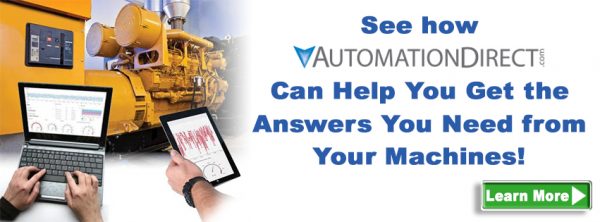The journey from theory to reality can be fraught with the unexpected and not as clear-cut as it seems on paper. Even the most direct path from concept to completion can have external influences, that might seem irrelevant at the time or might not be known at all, which can cause undesirable results in the end. For example, if I plant an apple seed and give it lots of sun and water, theoretically it should grow. But in reality, there are many other factors that can come into play and affect the outcome. Insects, animals, disease, soil quality, poor drainage, and unexpected frost are some of the issues that may need to be addressed in order for the seed to not only deliver fruit, but deliver the best fruit possible.
The same holds true for industrial controls and machines. As a dedicated OEM or system designer, you strive to deliver the best possible solution for your customer and in theory have done so with hours and hours devoted to development and in-house testing. But the field can be an un-friendly place and you need to be cognizant of not only field performance issues but of unforeseen opportunities for improvement. That’s why it’s a necessity for your machines to remain “visible”, no matter their locations, through remote access and data collection. But to achieve this real-time machine visibility, there are a few requirements, the first of which is Ethernet.
It all starts with Industrial Ethernet
Ethernet is everywhere and industrial Ethernet, which is Ethernet reinforced with rugged connectors, cables and better determinism, has facilitated many of the recent advances in the industrial realm. The IIoT and Big Data evolutions are only possible because industrial Ethernet has paved a way for factory floor data to be shared and accessed globally. Without the speed and interoperability that industrial Ethernet networks provide, real-time remote monitoring and any IT/OT convergence wouldn’t be possible. With today’s connected world, Ethernet is a must.
The right sensors for the right metrics
Machines built upon an industrial Ethernet foundation can supply a mountain of data. But where does the data come from and what types of data are important? That all depends on your particular key performance indicators or KPIs. Maybe your focus is on safety related issues, or you require strict adherence to specifications and want to know of any deviations, or you are looking for hidden inefficiencies in an effort to reduce cost, whatever metrics you deem important will determine the amount and type of data and sensors your application will require. With the right sensors and the right data, you can gain the insight needed to answer almost any question. The following questions and answers are some examples of what is possible by simply tracking machine output with just a couple object detection sensors:
- Has the redesign on machine 2 improved performance? Throughput has increased by 20% with the new modification
- Are the machines load balanced properly? No, machine 3’s output is 1/2 of Machine 2 and twice that of Machine 1
- Do the machines have the capacity to handle the added demand? Machines recorded max throughput is well above what is required.
Connectivity options
There are several avenues you can take to stay connected with your installed machines. Smart sensors and actuators can provide a window into individual device data. For access to a wider range of system variables, utilizing the data collection capabilities of PLCs is a good choice. Many PLCs offer built-in webserver functionality which allows you to monitor numerous system variables from any web browser. Some, like the Productivity series of controllers, offer mobile apps so you can also stay connected on the go. Another option is email and many controllers have this functionality built in. The Do-more! BRX controller, for instance, can send emails with data files attached directly to you.
Monitoring remote machines can also be done through an embedded HMI. Like many PLCs, the C-more HMI has a built-in webserver and a mobile app which can be very useful for keeping remote machines visible.
For a more secure connection option, VPN routers offer remote data access using the latest encryption techniques. Many VPN routers, including StrideLinx, provide a cloud-based data collection solution where machine data is securely stored in cloud servers for anytime, anywhere access.
If you are interested in keeping your machines visible and the added benefits remote visibility can provide, stay tuned for further discussions on Ethernet, data collection, and connectivity options.
Originally Published: July 2018


